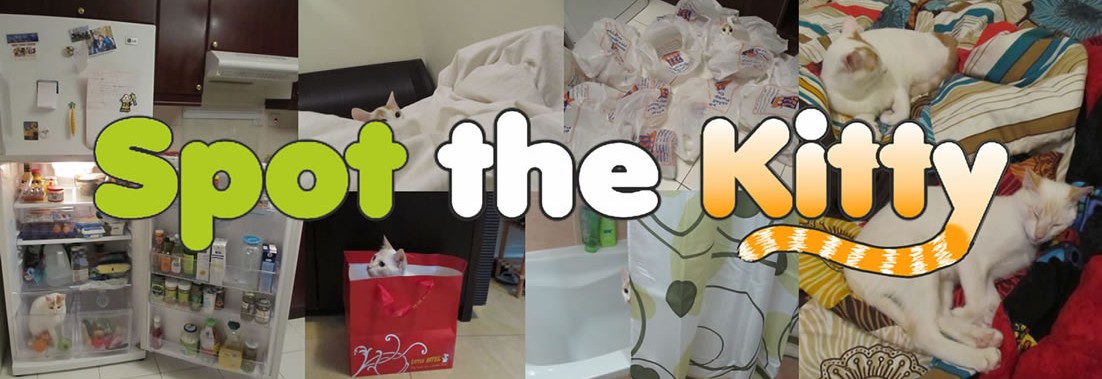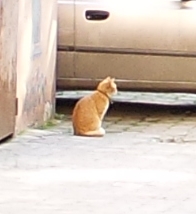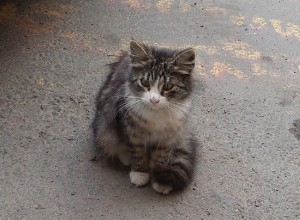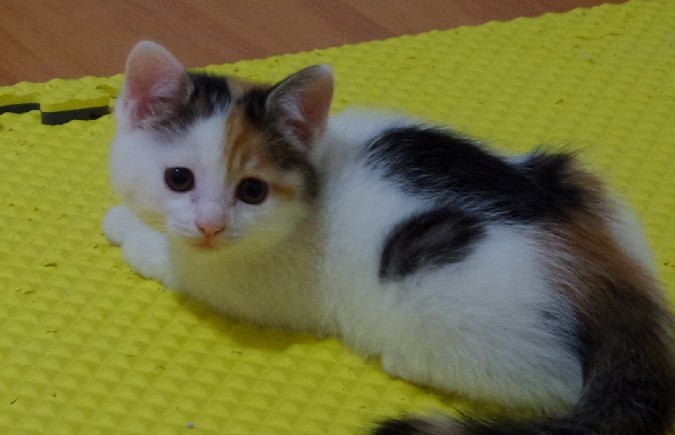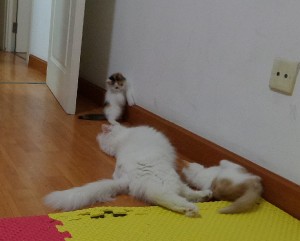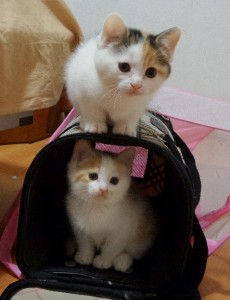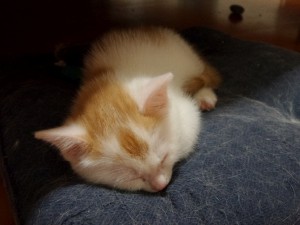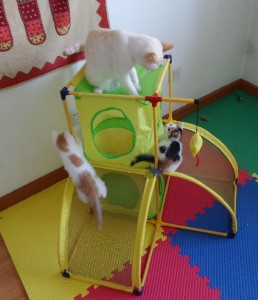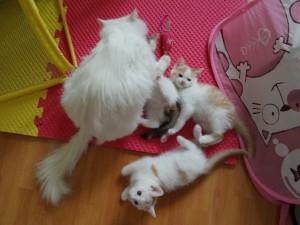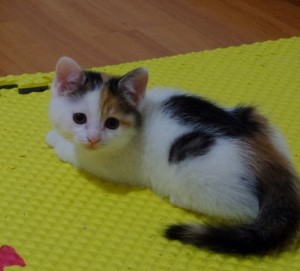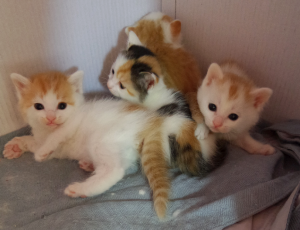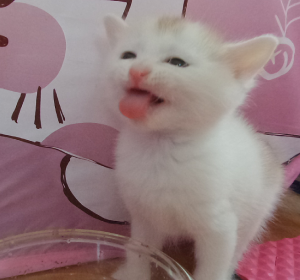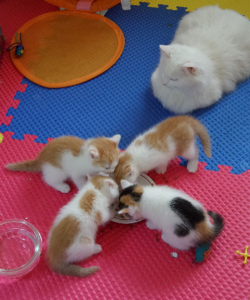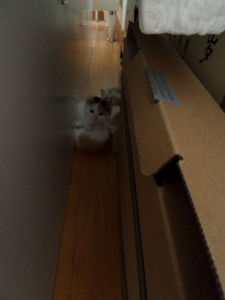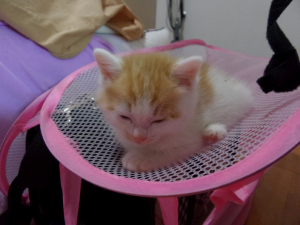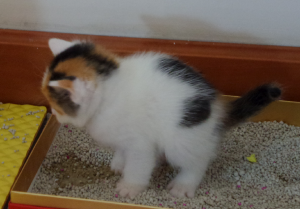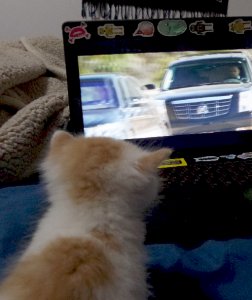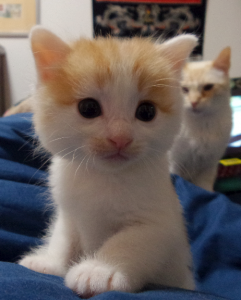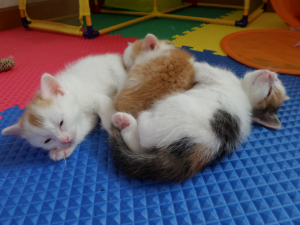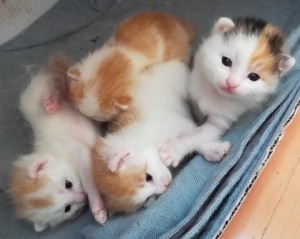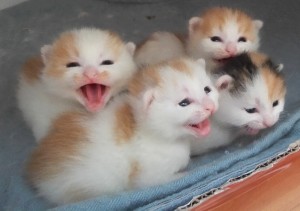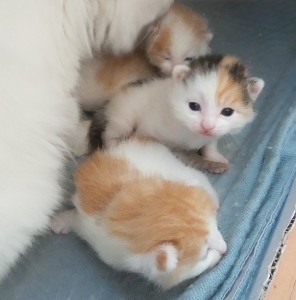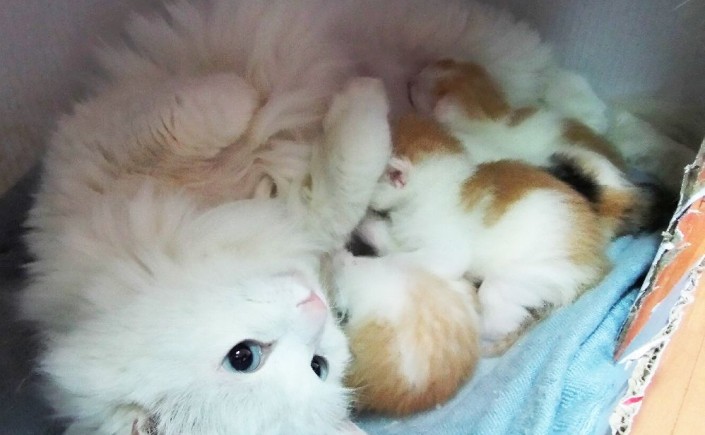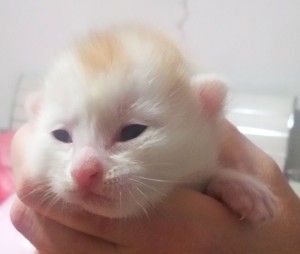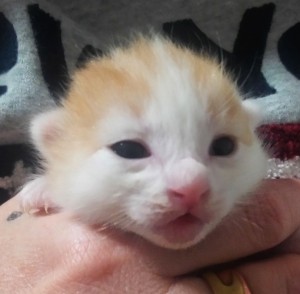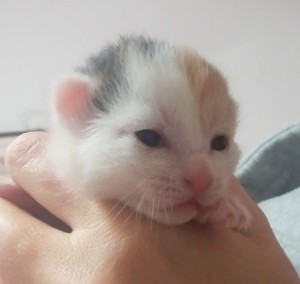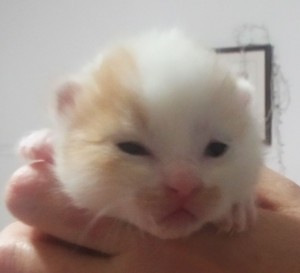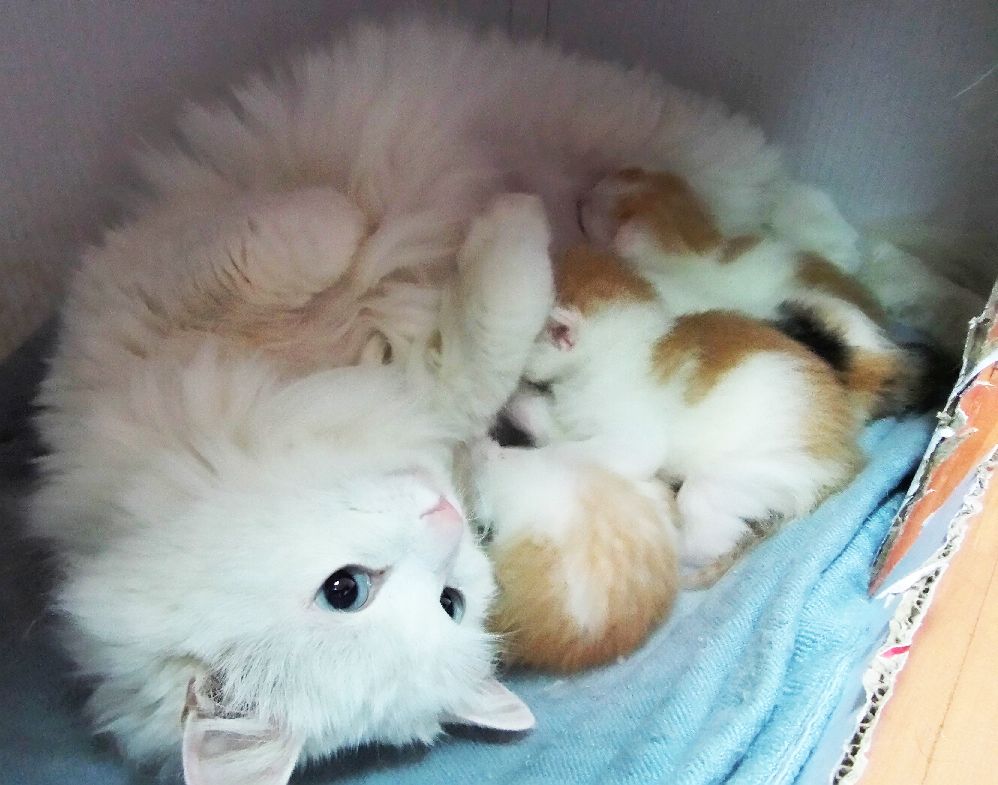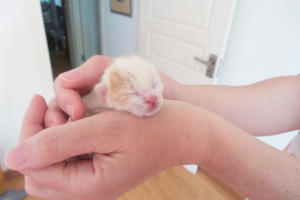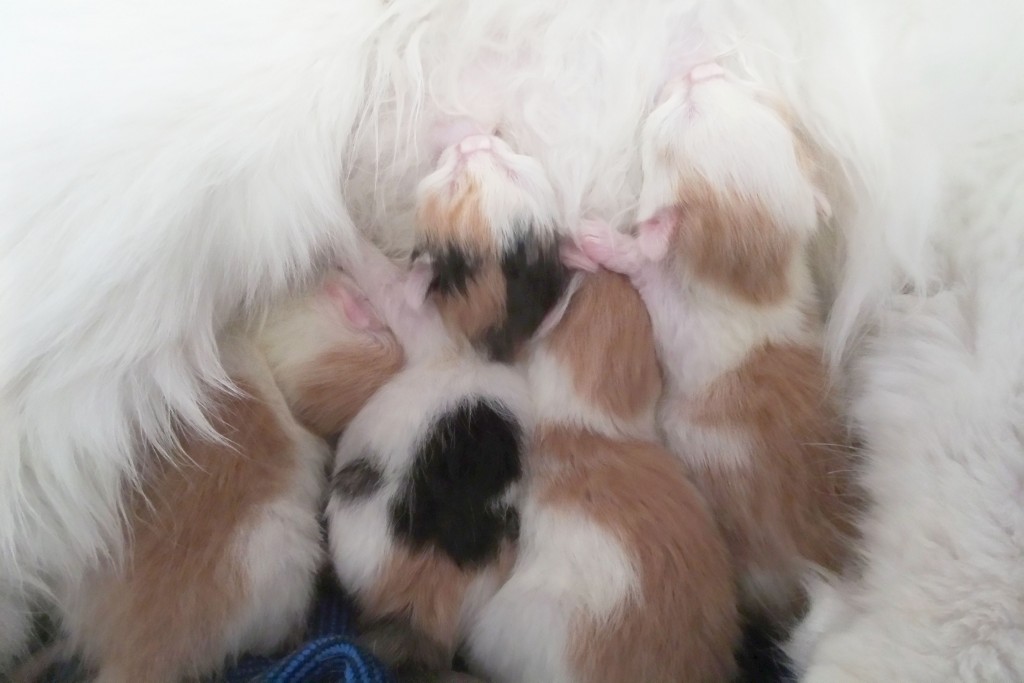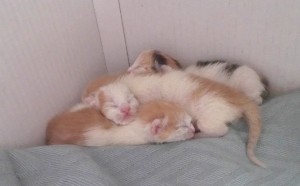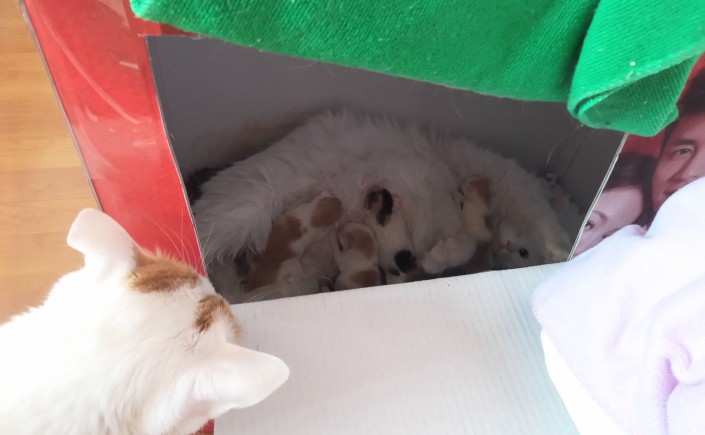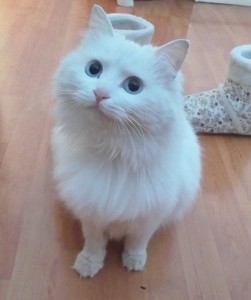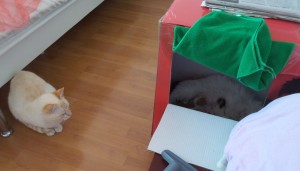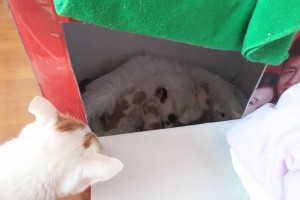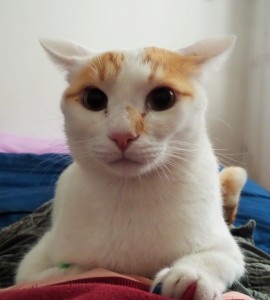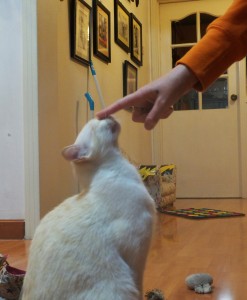
Dear Baker,
Recently I’ve been getting these crazy urges to poop outside the box. I hop up onto my human’s bed and the first thing that pops into my mind is, “Here’s a good place to poop!” I know this is wrong, because the goldfish told me the previous cat of the house was kicked out for pooping outside the box. But the litter box is just so unappealing to me! What should I do?
Advertisement: Click here to play Spot the Kitty
Please help!
Your fan,
Fluffy, North Carolina
Dear Fluffy,
This “outside the box” dilemma is more common than you might think! First of all, you need to understand that there is nothing wrong with you. You aren’t a naughty or vindictive cat. You’re not trying to use psychology on your humans or punish them. It is possible that you have a urinary tract infection or other physical problem that is making it difficult to get to the litter box in time, so the first step is convincing your humans to take you to the vet.
If there is nothing wrong with your plumbing system, then the next step is to analyze the litter situation in your house. My humans once went on a vacation in Egypt to see the greatest cat of all time, the Sphinx! They report that while on a bus trip they were allowed out of the bus to use the bus-station bathroom, but were appalled at the state of the bathroom — no toilet, just a hole in the floor to squat over, no flusher, just a bucket of water and a scoop, no toilet paper, no soap, no towels, and the smell! My humans were not able to use this third-world plumbing nightmare, and decided to squat in the desert behind the building to do their business instead. Since that trip, they have been much more understanding about our cat litter plights and have provided us with litter boxes that we enjoy using.
If you think the litter in your house could use an upgrade, print off the information below and leave it somewhere your humans are likely to find it, such as on the fridge door or a pillow.
The Three Facets of Pleasant Pooping
1. Location
Your litter box should be easily accessible from all areas of the home and have a good view of the surrounding area.
Humans like to have the litter box hidden away, out of sight, and out of smell, perhaps thinking that cats, like their human friends, like to poop in privacy. But cats prefer to poop out in the open so that while they are in the very vulnerable position required, they can keep a wary eye on their surroundings. This is especially important to large wild cats like lions and pumas, but housecats have the same instincts as their wild cousins and like to be able to scan the house for intruders while squatting.
Plus, if the litter box is located in the basement behind the furnace, it might be too far for some cats, especially the elderly or young, to go when they hear the call of nature. A good litter box is an accessible litter box. If your house is very large, you may choose to have two litter boxes in different areas of the house, perhaps one upstairs and one downstairs, for example.
2. The Box
Litter boxes should be large and open with high sides to keep litter in, and a lower doorway area to allow easy access.
Humans prefer a covered box, to keep the smell from reaching their delicate noses, but they don’t always realize that the cat’s nose is even more delicate than theirs. A covered litter box is not pleasing to many cats. As well as for the reason mentioned above (personal safety), no cat wants to sit in a dark, stinky cave to do his business. The best way to keep the litter box from getting stinky is to remove poop every day and replace all litter at least once a week. A clean litter box doesn’t need a cover.
A multi-cat household should have more than one litter box, and these boxes should be strategically placed around the house. Some cats don’t mind sharing a litter box, but others prefer to have their own pooping territory. Also, some cats are impatient when it comes to pooping and will find another place to answer the call rather than wait their turn. A general rule is one box per cat plus one extra.
If your humans have had the same boxes available for your pooping pleasure for many years, they might just be getting old and scratched up, or permeated with a smell that will not wash out. I recommend purchasing new litter boxes from time to time.
While it is helpful to periodically clean the litter box, fresh water and a scrub with a brush will suffice. Most kitties will turn up their noses at the strong smell of Dettol, bleach, or Pinesol in the box.
3. The Litter
A decent layer, not too thick, of your substrate of choice will make pooping more pleasurable.
Some humans like a plain white toilet, while others prefer one with a wooden seat, fluffy seat cover, or even a seat heater. Once, my humans had a clear resin toilet seat with seashells and plastic fish inside. My point is, every cat has his preference when it comes to the litter he squats in. What is my personal favourite, you ask? Crystals. They absorb liquid and odour. Some cats prefer to dig in a smaller substrate and others prefer larger pieces. Humans seem to be fond of clumping litter, but not all cats are comfortable with digging through the lumps. The trick here is to try a variety of different litters until you find the one that you like most, and then stick to it. Multi-cat households might have different litters in different boxes to appeal to the varying personalities of those who will dig and squat in them.
Most cats prefer one and a half to two inches of litter. Too much litter in the box can be overwhelming.
Many cats are turned off by scented litters or air fresheners. Again, the scent of a clean, well-scooped litter box is most pleasing to a cat’s nose. If your litter of choice is not very good at hiding or eliminating odours, your humans should try sprinkling a thin layer of baking soda into the box before adding the litter.
Oddly, many humans do not like to have little bits of cat litter treaded throughout the house, although I personally find them decorative and fun to play with. The solution is to put a mat outside the litter box to catch bits from between the toes. My humans have a robot vacuum which picks up the stray bits of litter, and is fun to watch.
If your humans have tried everything listed above and you still feel the urge to poop outside the box, you may need to visit a cat behaviourist. Your vet should be able to hook you up. Good luck, and happy pooping!
Your pal,
Baker
– By K.I Borrowman
